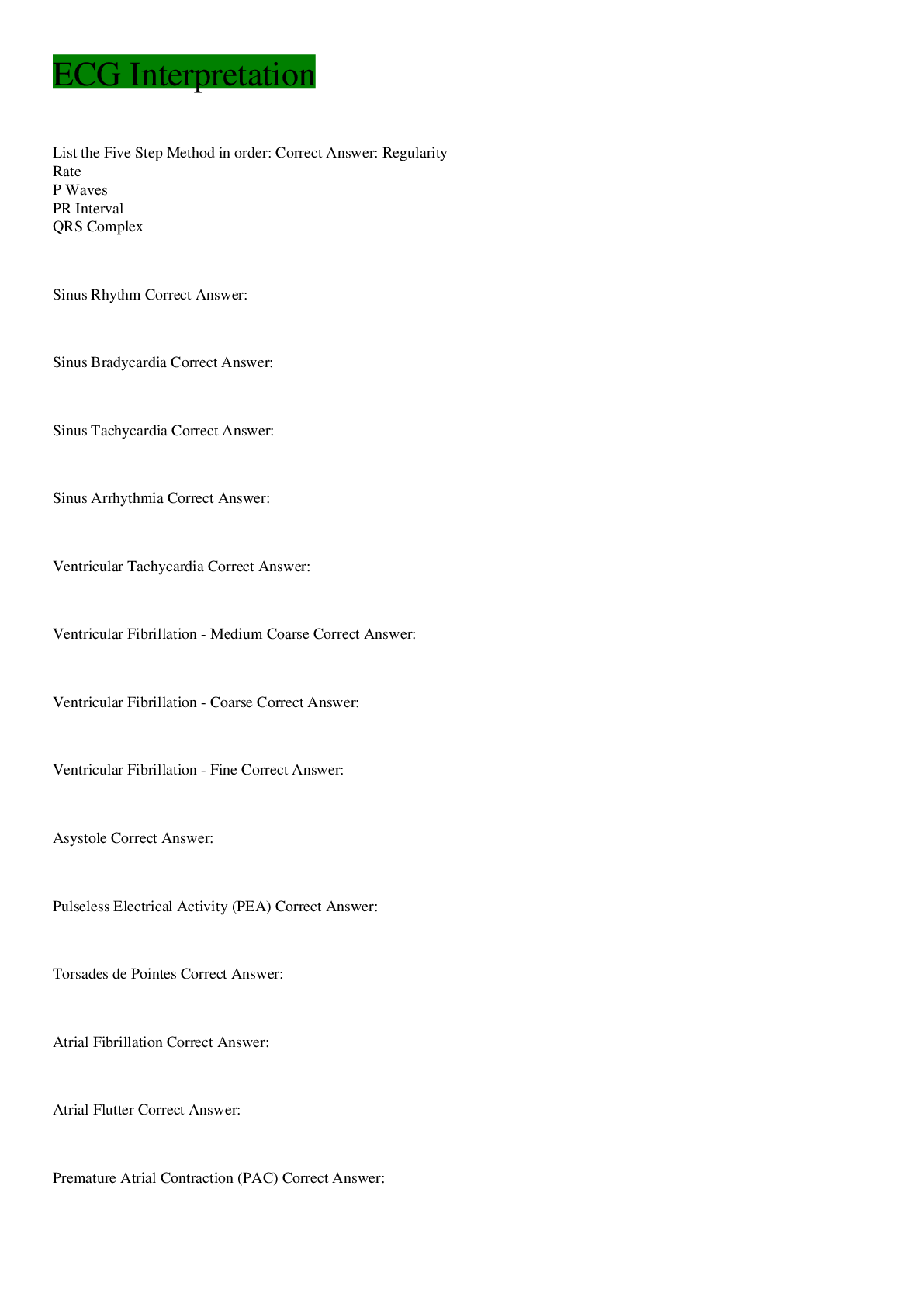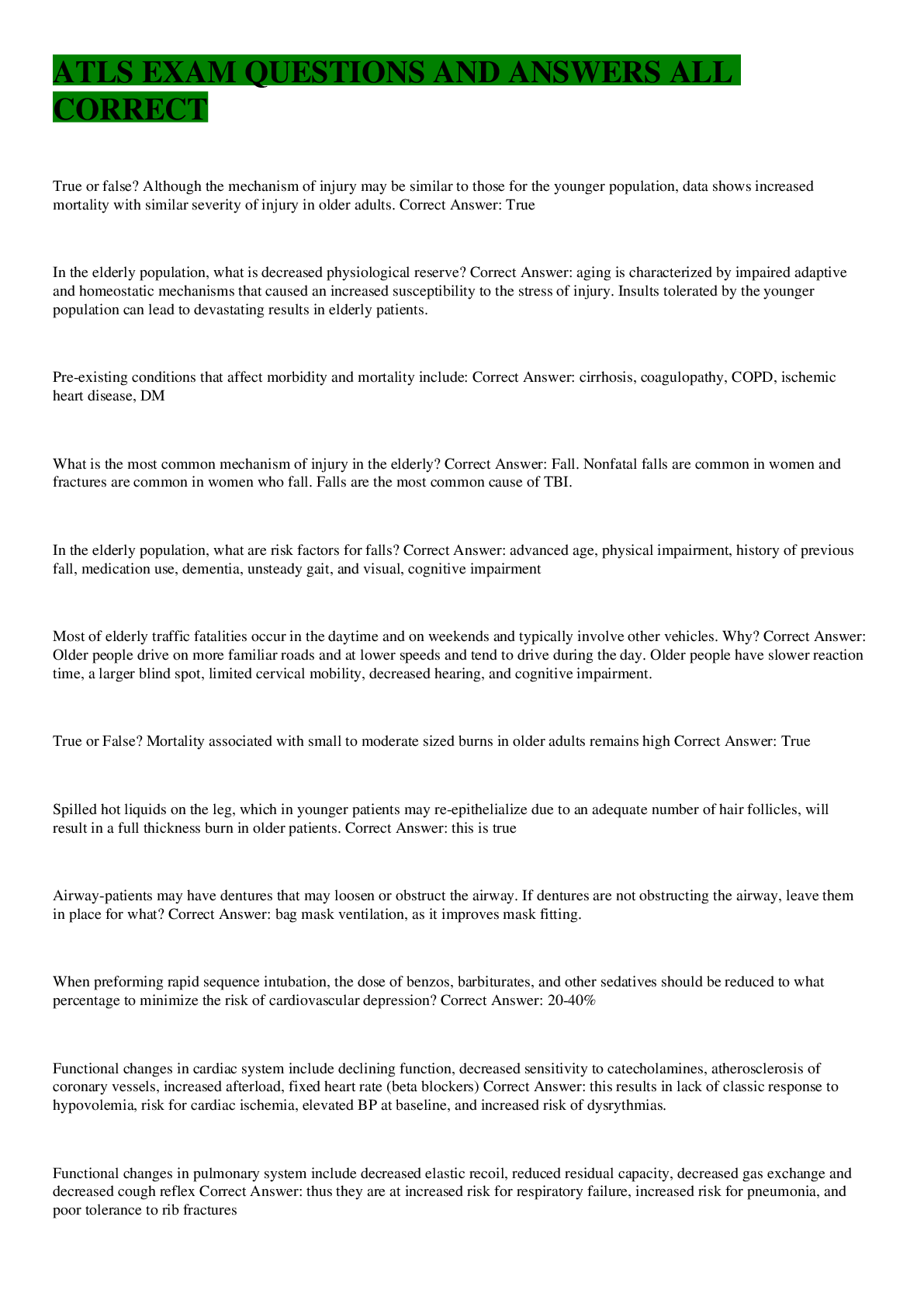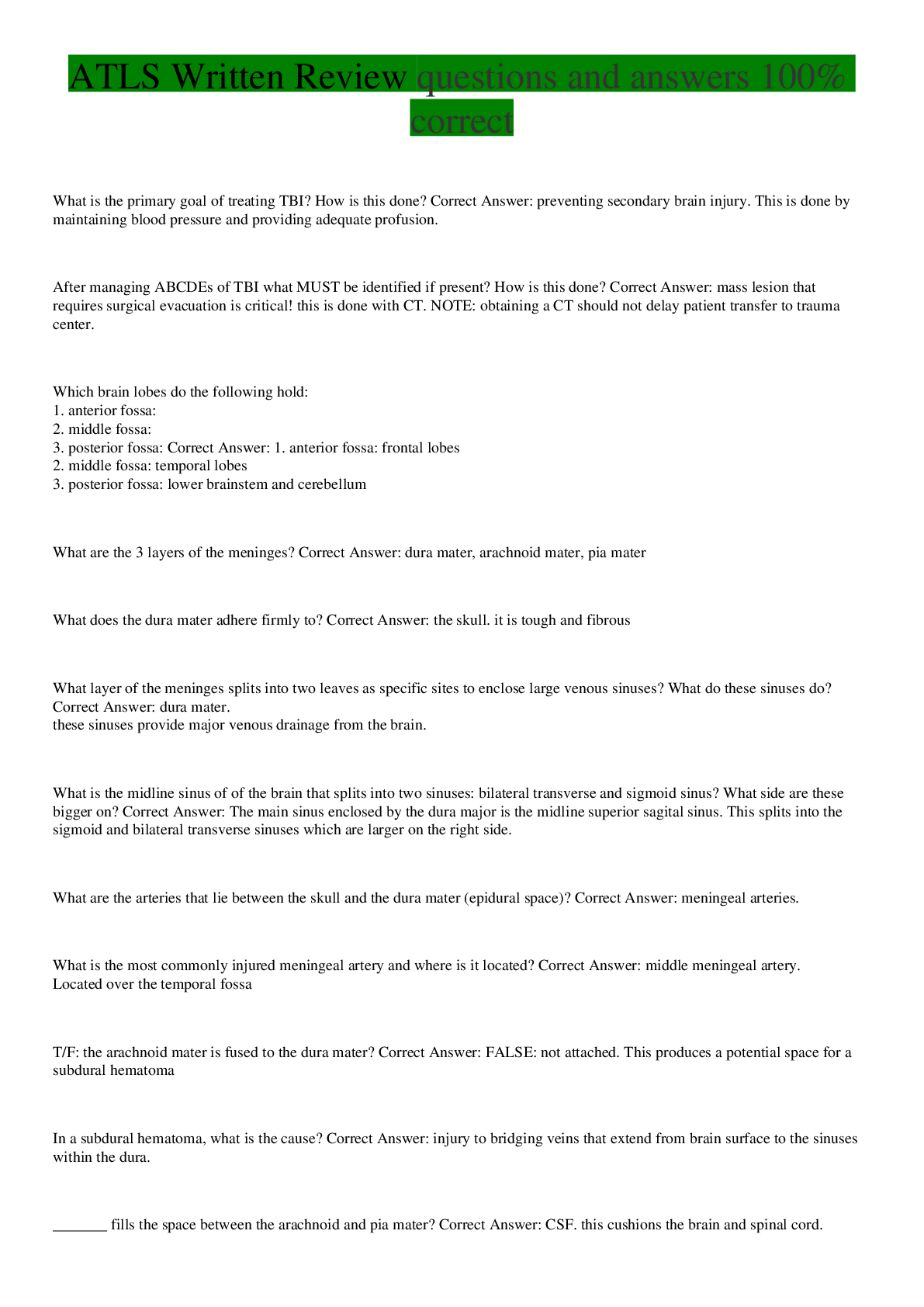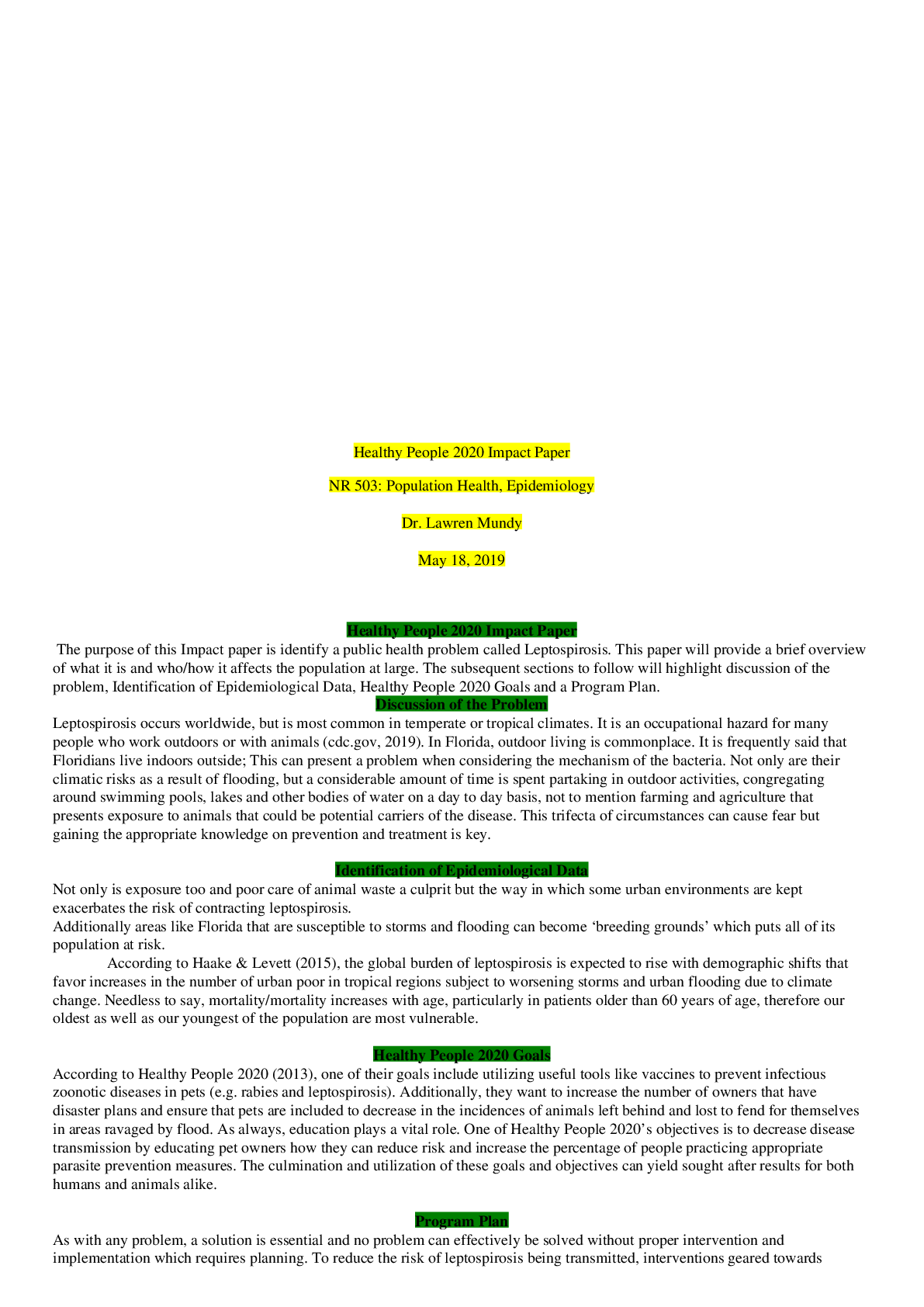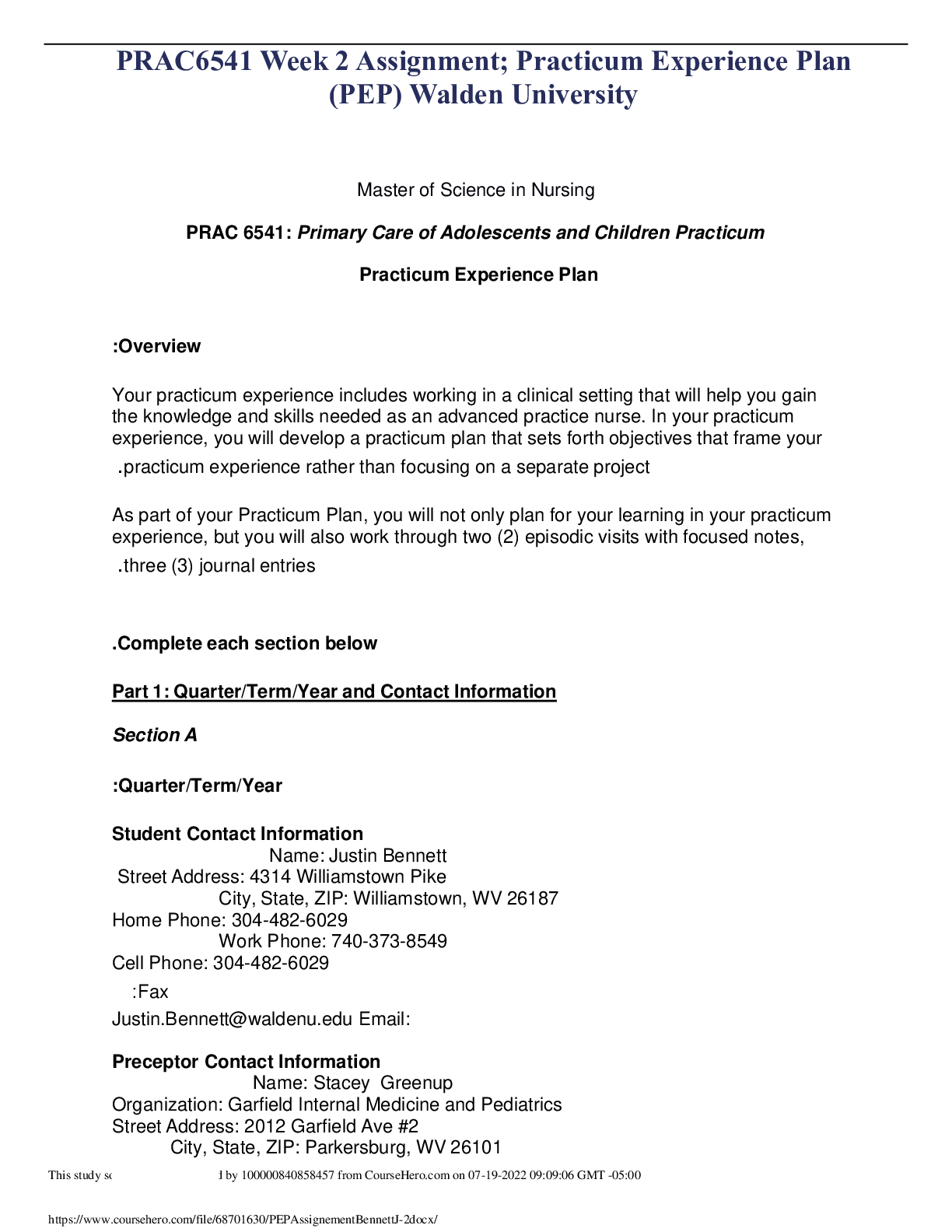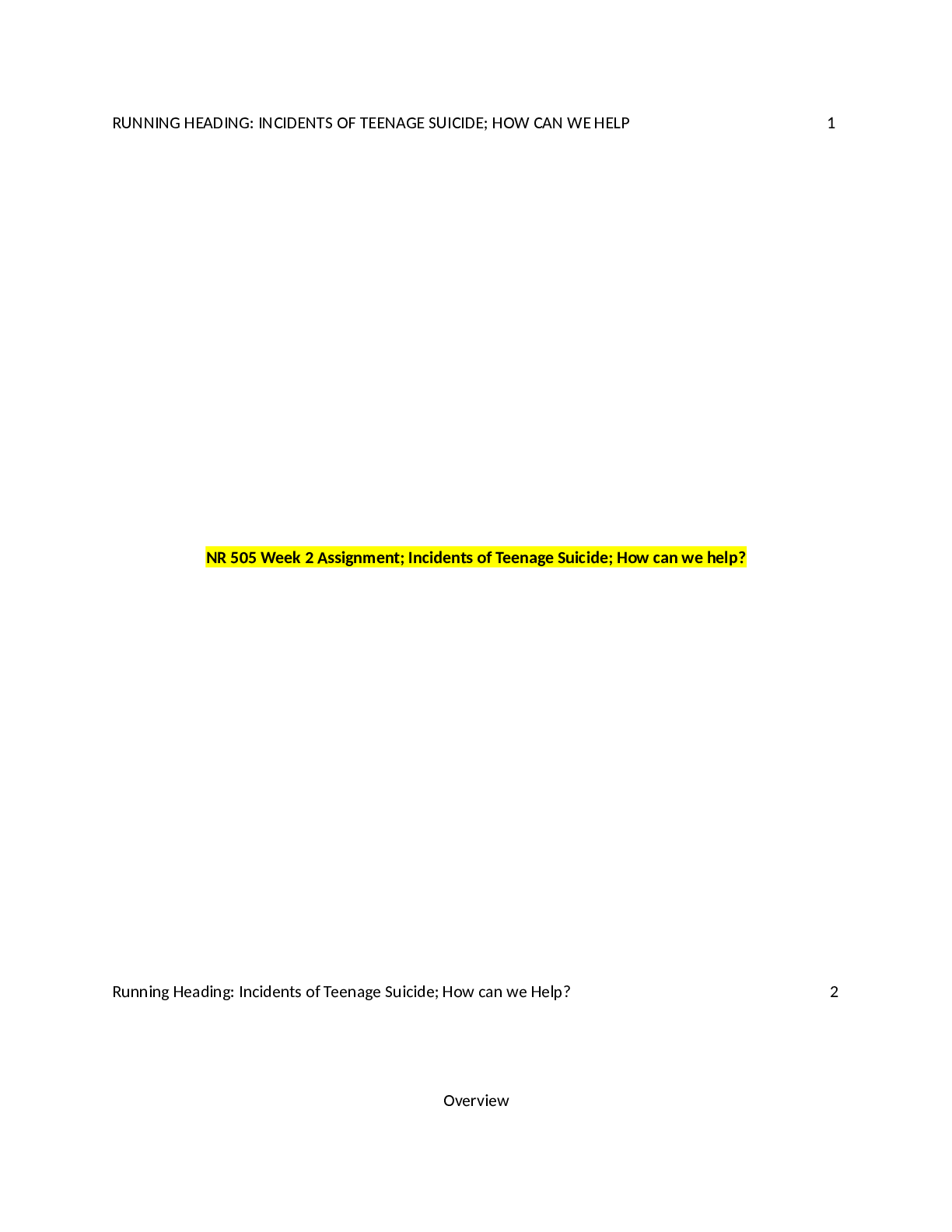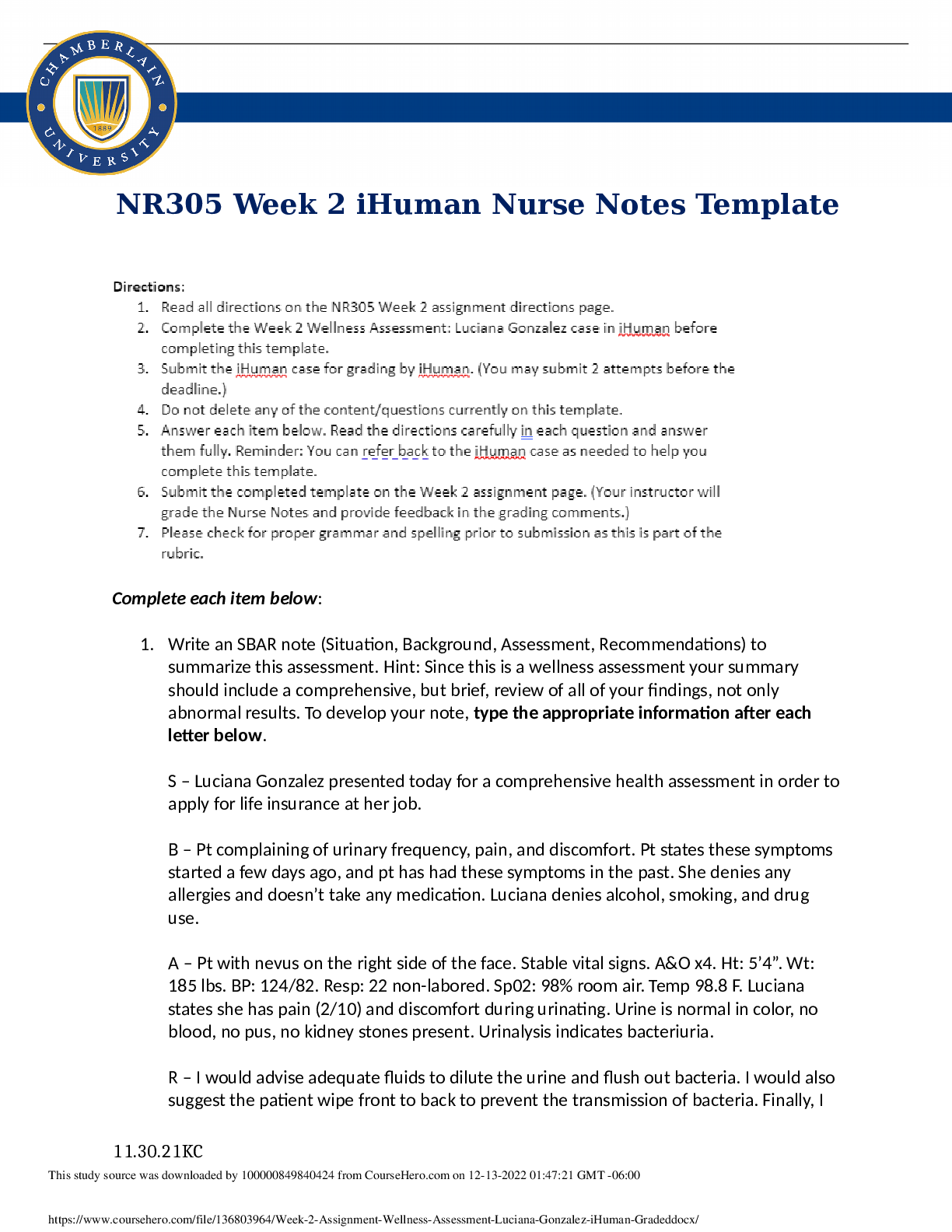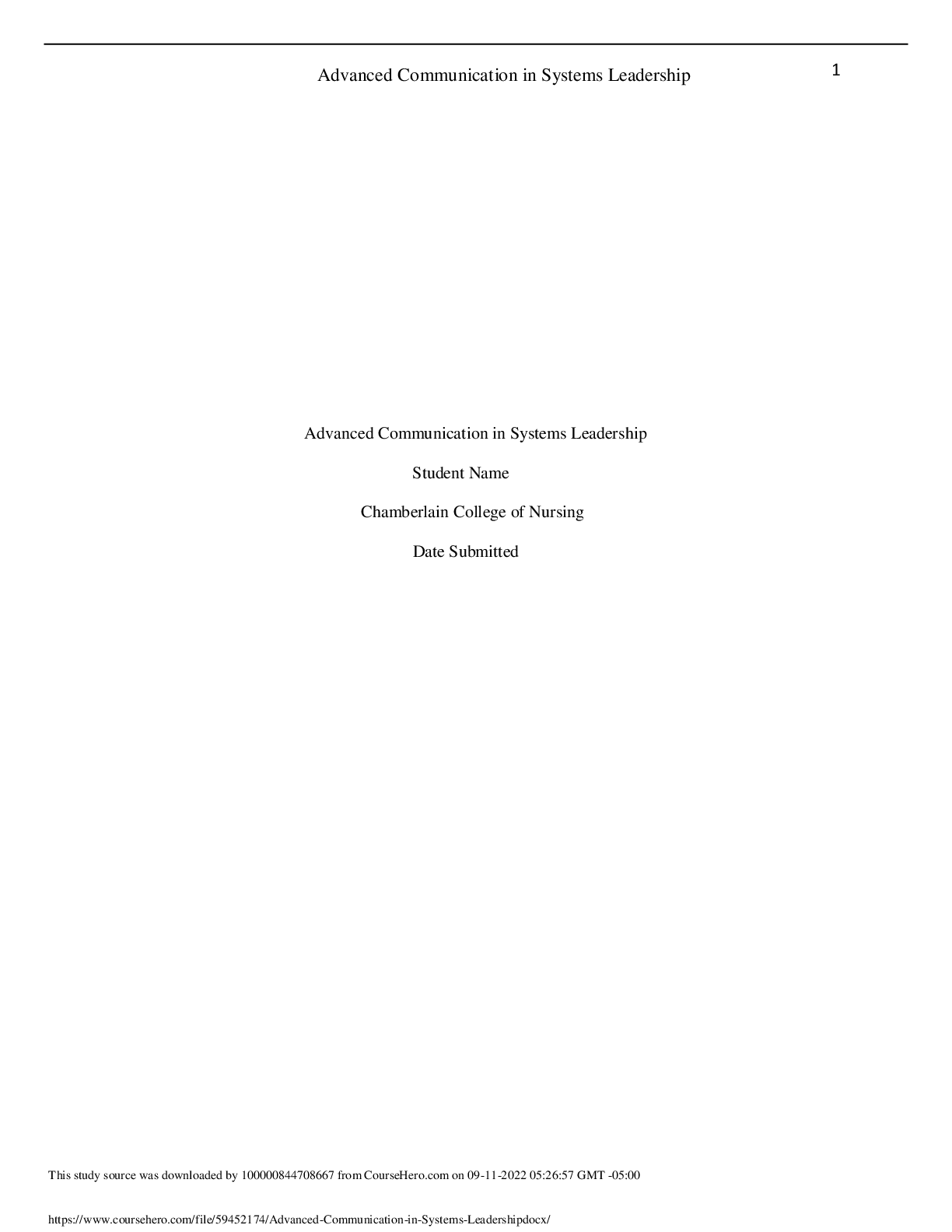Health Care > EXAM > NRNP 6531 Week 2 Assignment; i-Human Case Study; Evaluating and Managing Integumentary Conditions (All)
NRNP 6531 Week 2 Assignment; i-Human Case Study; Evaluating and Managing Integumentary Conditions
Document Content and Description Below
Evaluating and managing integumentary conditions Student Name Walden University NRNP 6531:Advanced Nursing Practice Competencies Integumentary and HEENT conditions Dr. Laneita Davis Jun... e 17, 2021 1 / 2 2 Evaluating and managing integumentary conditions Evaluating and managing integumentary conditions According to (Buttaro et al., 2021), the clinician must consider that skin problems often occur in our population. Skin diseases can take many forms and manifest quickly. Due to the dermis being the largest organ on the body, skin problems can be one of the hardest to heal and prevent spreading(Seidel et al., 2011). There are many factors such as ethnicity, age, population, genetics, and the body habitus skin surface. There also could be an underlying systemic pathologic condition that may be causing the problem (Buttaro et al., 2021, p. 230). Krista Hampton, a 25-year-old female, presented to the clinic today with complaints of a rash and burning between her legs. Discovered between her thighs, then she showed multiple small red areas, some with fluid and some without, on the inner posterior forearm. The patient reported going bushwhacking and possible exposure to poison ivy, oak, and or sumac. The patient additionally believes it could be a mosquito and or a tick bite. The patient denies overthe-counter drugs and or treatment. The only prescription drug she takes is birth control pills— the chief patient complaint of rash and going bushwacking. The primary diagnosis chosen is Allergic Contact Dermatitis (L20.9). Differential diagnosis dermatitis herpetiformis Sporotrichosis (B42) dermatitis herpetiform (L13.0) Seborrheic Dermatitis (L21.9). Primary diagnosis Allergic Contact Dermatitis (ACD) (Chorzelski et al., 2020) (L20.9) (Casto, n.d.) the patient was going bushwhacking and possible exposure to ivy, oak, and sumac. ACD is known for the inflammation that It causes on the skin, usually when a person has been exposed to a chemical but mostly antigens (Buttaro et al., 2021). Thousands of antigens and chemicals can cause harm to the human species. Usually, the patient will present with pruritus, [Show More]
Last updated: 1 year ago
Preview 1 out of 6 pages
Instant download

Buy this document to get the full access instantly
Instant Download Access after purchase
Add to cartInstant download
Reviews( 0 )
Document information
Connected school, study & course
About the document
Uploaded On
Aug 03, 2022
Number of pages
6
Written in
Additional information
This document has been written for:
Uploaded
Aug 03, 2022
Downloads
0
Views
94




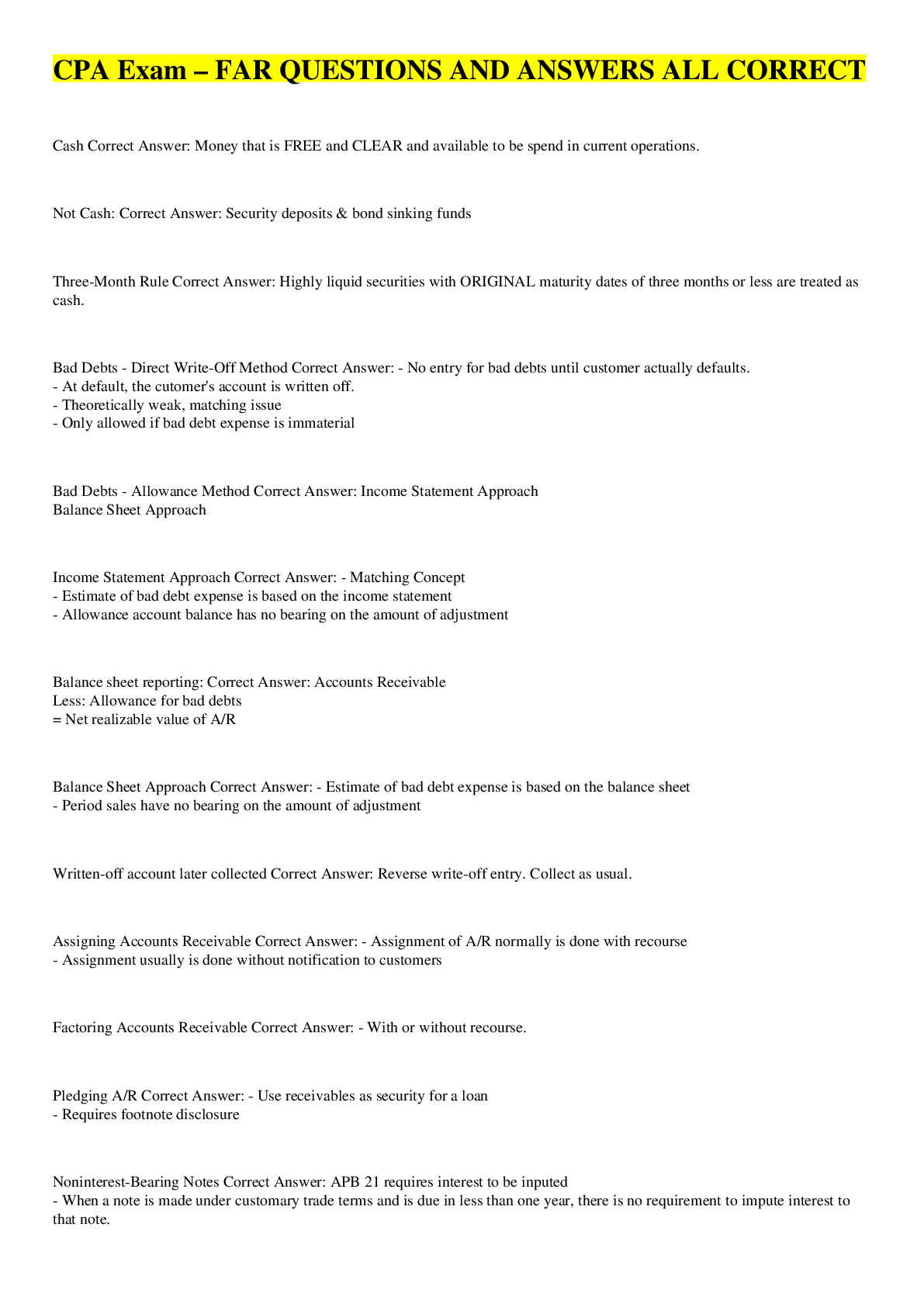
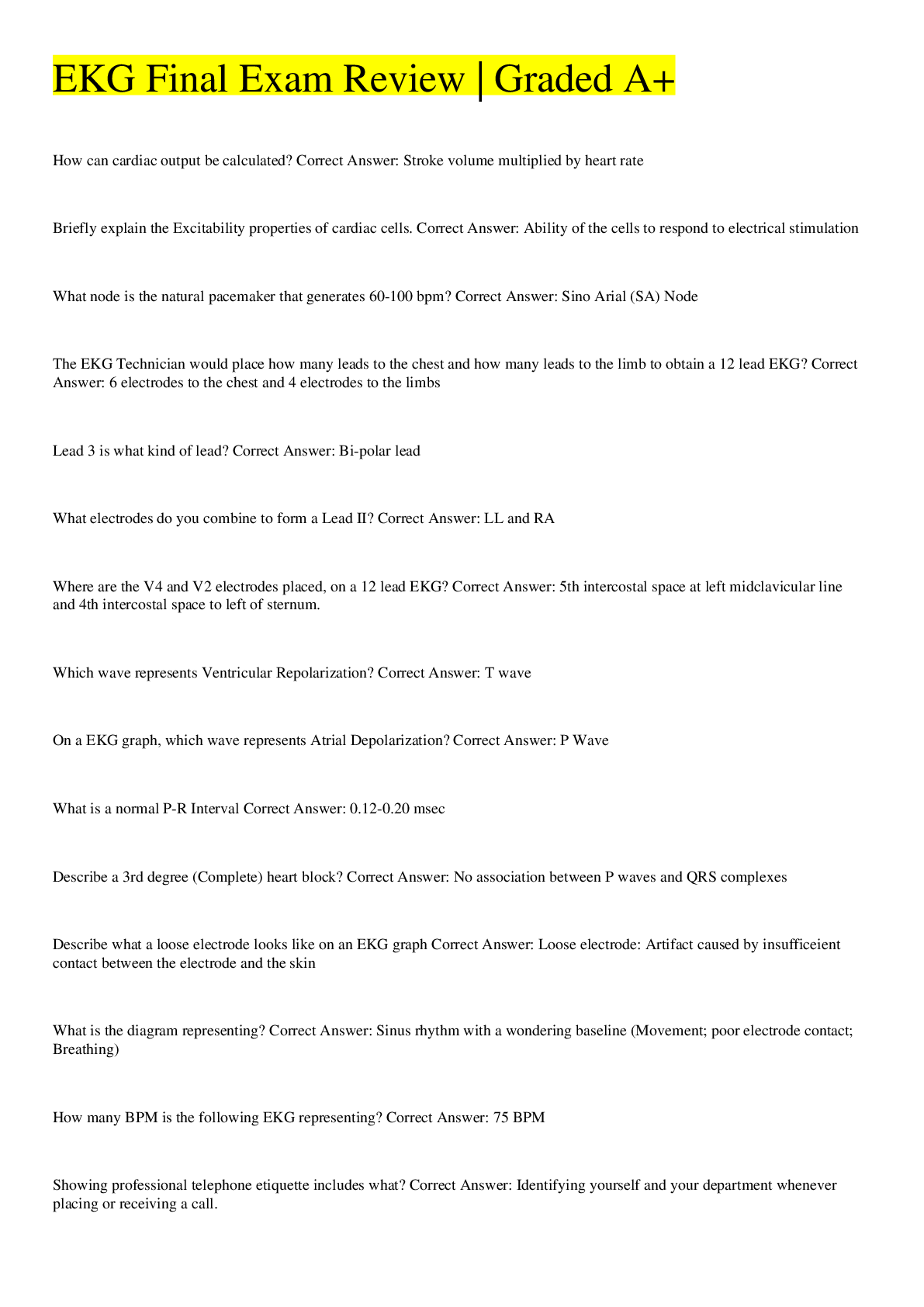

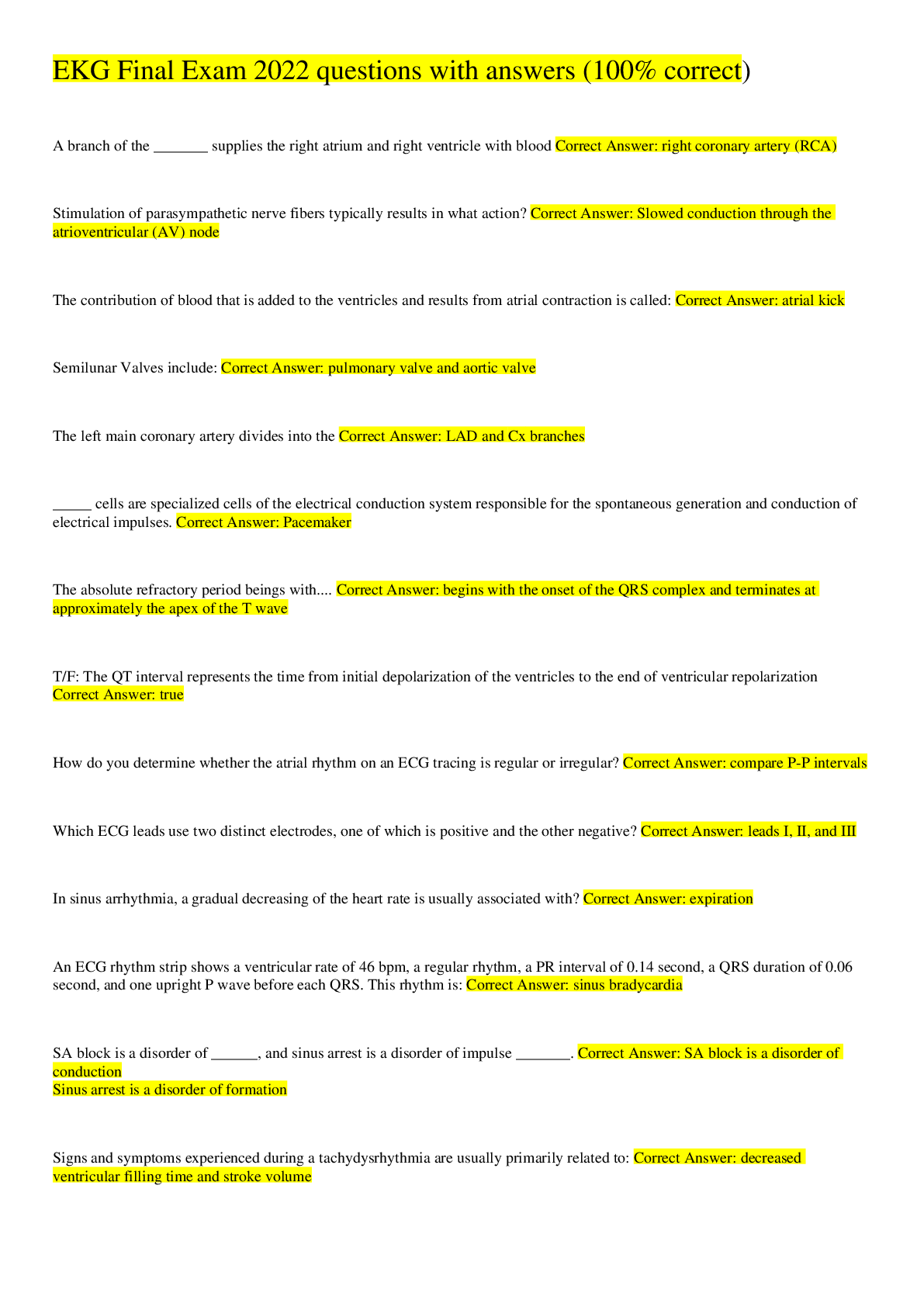
.png)
